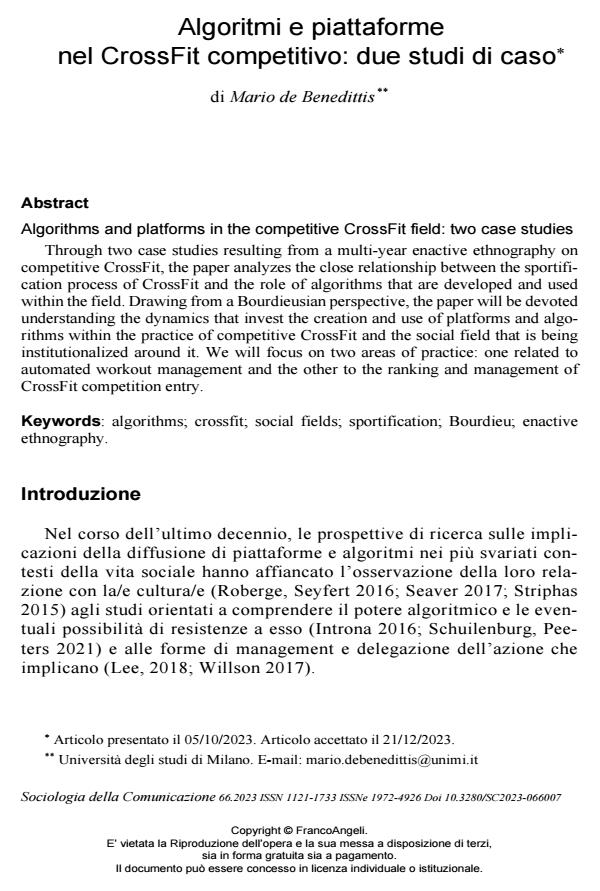Algorithms and platforms in the competitive CrossFit field: two case studies
Journal title SOCIOLOGIA DELLA COMUNICAZIONE
Author/s Mario de Benedittis
Publishing Year 2024 Issue 2023/66
Language Italian Pages 17 P. 112-128 File size 290 KB
DOI 10.3280/SC2023-066007
DOI is like a bar code for intellectual property: to have more infomation
click here
Below, you can see the article first page
If you want to buy this article in PDF format, you can do it, following the instructions to buy download credits

FrancoAngeli is member of Publishers International Linking Association, Inc (PILA), a not-for-profit association which run the CrossRef service enabling links to and from online scholarly content.
Through two case studies resulting from a multi-year enactive ethnography on competitive CrossFit, the paper analyzes the close relationship between the sportification process of CrossFit and the role of algorithms that are developed and used within the field. Drawing from a Bourdieusian perspective, the paper will be devoted understanding the dynamics that invest the creation and use of platforms and algorithms within the practice of competitive CrossFit and the social field that is being institutionalized around it. We will focus on two areas of practice: one related to automated workout management and the other to the ranking and management of CrossFit competition entry.
Keywords: algorithms; crossfit; social fields; sportification; Bourdieu; enactive ethnography.
Mario de Benedittis, Algoritmi e piattaforme nel CrossFit competitivo: due studi di caso in "SOCIOLOGIA DELLA COMUNICAZIONE " 66/2023, pp 112-128, DOI: 10.3280/SC2023-066007